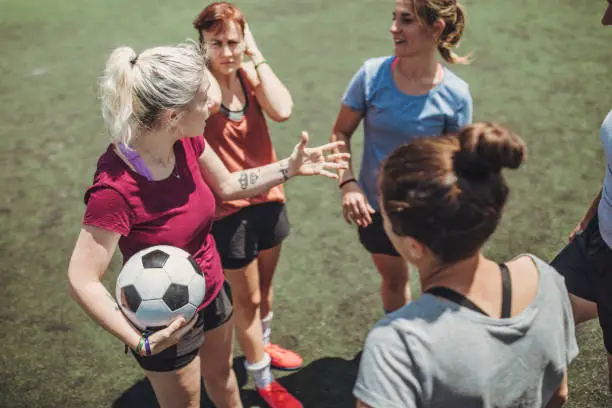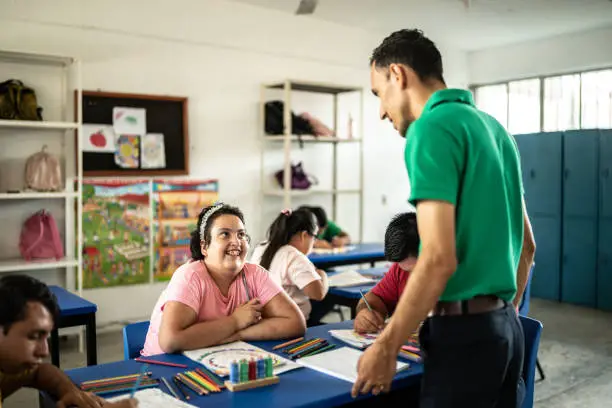Grants for Sports Teams which provide monetary assistance to support various needs such as equipment purchase, facility upgrades, training, and travel costs.
Sports teams, whether at the community, school, or professional level, require funding to sustain their operations and contribute to the growth of their athletes.
Today, we will delve into the world of sports grants, discussing their importance, potential sources, application process, and we will also share practical examples of successful grant applications.
The Importance of Grants for Sports Teams
Sports grants are an essential element in the financing model of many sports teams. They bridge the gap between team expenses and the resources that are readily available, often assisting teams that may not have sufficient funds from their existing revenue sources, including membership fees, merchandise sales, and sponsorships.
They can help provide safe and adequate equipment, bolster the quality of coaching, and ensure athletes have access to the best facilities and training opportunities.
Potential Sources of Sports Grants
Grants come from a multitude of sources, each with its own criteria and application process. Here are some potential grant sources:
1. Government Grants: Both local and national governments often have funds allocated to promote sports and healthy living within their communities. For instance, the US Federal Government provides numerous sports grants like the Physical Education Program (PEP) Grant, targeting schools and community-based organizations.
2. Non-Profit Organizations: Many foundations and trusts are committed to promoting sports and physical fitness. The NFL Foundation, for example, provides grants to football clubs at all levels for various needs such as field surface grants and social justice grants.
3. Corporations: Businesses often allocate a portion of their profits towards corporate social responsibility (CSR) programs, some of which include sports grants. Adidas, for example, operates the Adidas Legacy program, a grassroots basketball initiative that provides financial assistance to high school teams in select U.S. cities.
4. Sport Governing Bodies: These organizations, like the United States Soccer Federation or the International Olympic Committee, often have funding available to promote and develop their sport.
Several foundations and organizations provide grants for sports teams.
Here are a few:
1. NFL Foundation: The National Football League Foundation offers a range of grants, including football field grants, sports injury research and prevention grants, and youth football grants.
2. NBA Foundation: This foundation focuses on providing grants to organizations that promote education and employment in Black communities. Sports teams that align with these objectives may qualify.
3. Women’s Sports Foundation: This foundation provides grants for girls and women participating in sports. It offers several grant programs, such as the Travel & Training Fund Grant.
4. Good Sports: Good Sports provides grants for sports equipment, apparel, and footwear to disadvantaged young people nationwide.
5. The U.S. Soccer Foundation: It offers several grant programs, including Safe Places to Play and Program Grants.
6. Baseball Tomorrow Fund: This fund awards grants to non-profit and tax-exempt organizations involved in the operation of youth baseball and softball programs and facilities.
7. LIDS Foundation: The LIDS Foundation provides grants to organizations that promote active and healthy lifestyles among young people.
8. The Yogi Berra Museum & Learning Center: They provide grants for youth baseball and softball teams in underserved communities.
9. The Daniels Fund: This foundation offers the Boundless Opportunity Grant, which includes sports among eligible programs.
10. The Cal Ripken, Sr. Foundation: It offers Youth Development Park grants, providing synthetic turf baseball fields for use by underserved youth.
11. Dr. Pepper Snapple Group’s Let’s Play Initiative: This initiative offers grants for sports equipment to keep kids active.
12. LA84 Foundation: This foundation supports youth sports in Southern California.
13. The Finish Line Youth Foundation: This foundation provides funding for community-based youth athletic programs and camps that focus on active lifestyles.
14. The Tony Hawk Foundation: This foundation provides grants for public skateparks in low-income areas.
15. Rugby Football Union: The RFU provides various grant schemes to support the development of rugby, particularly at the grassroots level.
These foundations and organizations usually have specific grant application periods and eligibility requirements, so it’s important to check their official websites for the most accurate and up-to-date information.
The Application Process for Sports Grants
Applying for a sports grant is usually a rigorous process that involves the following steps:
1. Research: Thoroughly investigate potential grant sources, and understand their application requirements, deadlines, and objectives. Tailor your grant proposal to align with the grantor’s goals.
2. Proposal Writing: Detail your team’s needs, goals, and how the grant money will be used. Provide clear, measurable objectives, a budget, and explain why your team is uniquely deserving of the grant.
3. Submission: Submit your proposal by the deadline and in the format requested by the grantor. Late or incorrectly formatted applications may be disqualified.
4. Follow-up: After submission, be prepared to answer any additional questions from the grantor. If successful, ensure that you meet all the requirements for receiving the funds, and properly thank the grantor.
Practical Examples
Example 1: High School Soccer Team – Federal Grant
A high school soccer team in New York wanted to expand their operations by hiring professional coaches and upgrading their training equipment. They successfully applied for the Carol M. White Physical Education Program (PEP) grant.
In their proposal, they illustrated their goals of improving player performance, increasing participation rates, and promoting a culture of physical fitness within their school. They provided a detailed budget for their intended use of the funds and demonstrated how their objectives align with those of the PEP grant.
Example 2: Community Basketball Club – Non-Profit Grant
A community basketball club in Los Angeles, primarily serving underprivileged youth, was awarded a grant from the LA84 Foundation, a non-profit that funds youth sports in Southern California.
The club highlighted their mission to provide a
safe, positive environment for local youth to learn basketball, build teamwork skills, and stay engaged in physical activities. They clearly explained the need for improved facilities and better equipment to ensure the safety and progress of their players. The club also shared success stories of past participants who had significantly improved their lives through involvement in the sport, adding a compelling human element to their proposal.
Example 3: Amateur Rugby Team – Corporate Grant
An amateur rugby team from Texas successfully secured a grant from the Gatorade ‘For the Love of Sports’ program. This program aims to support amateur teams with funding to help them improve their performance and grow their communities.
The rugby team’s application focused on how they foster a sense of community and promote fitness and health through rugby. They provided comprehensive plans for using the grant to hire strength and conditioning coaches, improve their training facilities, and conduct community outreach programs to get more people involved in the sport. Their commitment to promoting rugby in Texas and their clear, concise, and persuasive proposal were critical factors in their successful grant application.
Example 4: Elite Athlete Training – Sport Governing Body Grant
An elite swimmer from Florida applied for a grant from USA Swimming to aid in her training and competition costs. The grant’s purpose was to support athletes with potential for excellence in international swimming events, and the swimmer demonstrated her potential by showing her achievements in national level competitions, along with references from her coaches.
She detailed her training regimen, competition schedule, and associated costs, showing how the grant could help her reach her full potential. She also expressed her commitment to represent USA Swimming in a positive light and shared her ambition to inspire the younger generation to pursue the sport.
Conclusion
Grants play an integral role in the financial sustainability of sports teams, and understanding how to apply for these funds effectively is crucial. Sports teams need to ensure they thoroughly research available grants, understand the grantor’s objectives, create a compelling proposal, and adhere to application guidelines. With proper planning and execution, securing a sports grant can have a profound impact on the team and its community, opening up new avenues for growth and success.






